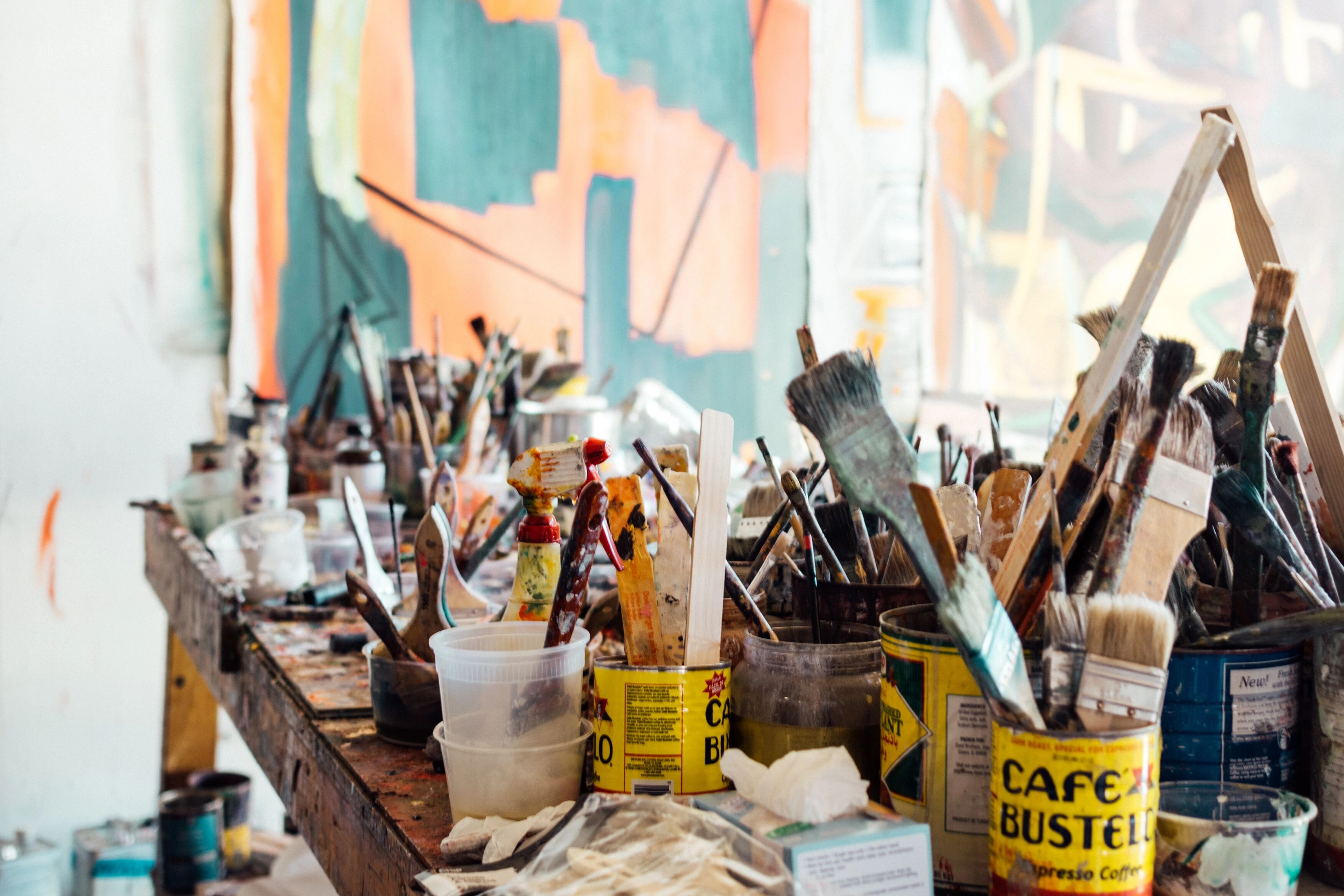
Art as Therapy: Your Personal Guide to Self-Discovery & Well-being
Unlock emotional release, deep self-insight, and stress reduction through creative expression. This guide offers a personal, accessible path to art as therapy, regardless of skill.
Art as Therapy: My Sanctuary, My Guide to Self-Discovery, and a Call to Create
I'll be honest with you, I used to scoff at 'art therapy.' My mind pictured serious clinical settings, profound emotional challenges, certainly not something for someone like me who just needed a good cup of coffee and a quiet afternoon (and maybe a nap, let's be real). I even dismissed it as a fancy name for doodling, convinced it was just another well-meaning but ultimately fluffy concept. My inner critic, always a fan of the practical, rolled its eyes at the very idea. But life, as it often does, has a funny way of nudging you towards exactly what you need. For me, that nudge came as a persistent, unshakeable restlessness, a suffocating feeling that words just weren't cutting it anymore. My chest felt like a tangled ball of yarn that no amount of talking or thinking would loosen. Picking up a brush, a cheap tube of acrylic, felt like a desperate, almost silly, attempt to yank at one of those threads. And then, slowly, miraculously, the yarn started to unravel. One vibrant, chaotic stroke at a time, it released a tension I hadn't realized I was holding.
This article is my attempt to demystify art as a personal therapeutic practice, a journey I truly believe is accessible to everyone, regardless of skill. It's less about clinical diagnosis and more about opening a profoundly personal dialogue with your inner world. Consider this your practical guide to its surprising, profound benefits, and how you can start your own colorful conversation. We'll explore the 'why' behind this practice and, crucially, the 'how' so you can begin to experience its magic for yourself, paving a unique path to healing and self-growth.
What I Mean When I Say 'Art as Therapy' (And What I Don't)
Let's clear the air. When I talk about art as therapy, I'm not always talking about working with a certified art therapist (though hats off to those amazing professionals; they do vital work, often tracing their roots to pioneers like Adrian Hill and Margaret Naumburg who championed art for healing). I later learned about Hill, an artist, who coined the term "art therapy" in 1942, recognizing art's capacity to aid his own recovery from tuberculosis. Naumburg, a psychologist, laid the groundwork for art therapy as a distinct psychotherapeutic discipline, emphasizing spontaneous art expression within a clinical framework.
Of course, art has been a source of healing and expression across cultures and throughout history, long before the term 'therapy' was attached to it. Think of ancient cave paintings used for spiritual understanding, traditional masks for emotional processing in rituals, Indigenous healing ceremonies, or even the intuitive mark-making Carl Jung encouraged for his patients in the early 20th century. Jung, ever the explorer of the psyche, saw spontaneous artistic creation as a direct pathway to the unconscious, a way for patients to externalize and integrate fragmented aspects of their inner world, foreshadowing many modern expressive therapies. And beyond structured approaches, even movements like Surrealism, with their focus on automatic drawing and accessing subconscious states, hinted at the profound, untapped power of creative expression. Long before these structured approaches, art also played a crucial role in early childhood education, fostering emotional development and communication, and has been a cornerstone in spiritual traditions for millennia. My take? While these pioneers and movements laid crucial groundwork, my own journey has led me to a more personal, less formal understanding of art's therapeutic power. To be clear, clinical art therapy involves a structured process guided by a trained professional to address specific psychological needs, whereas personal art as therapy is a self-directed practice for general well-being, growth, and self-exploration. Both are incredibly valuable, just for different purposes.
What I'm really getting at is the profound, personal benefit of the act of creating, the process itself. It's less about a diagnosis and more about a dialogue with your inner world, a non-verbal conversation that activates different brain regions than analytical thought. It's about giving form to the formless, color to the emotions that swirl inside us. From a neurological perspective, engaging in creative activities can activate reward pathways in the brain, leading to the release of neurotransmitters like dopamine and serotonin, and can actively help regulate your nervous system as your emotions find form and release. This isn't just fluffy stuff; your brain is actively shifting gears.

credit, licence
Think of it as active introspection, a way to process thoughts and feelings that might be too complex or too painful to articulate verbally. I remember grappling with a big decision, a crossroads that left me feeling paralyzed. Words just circled in my head, but putting down colors – seeing which ones dominated, how they clashed or blended – revealed a clarity about my true desires that simply talking hadn't touched. It's permission to be messy, to explore, and to simply be with whatever is coming up, without judgment. That's a huge one for me, the no-judgment zone. My brain can be a harsh critic, but when I'm painting, it often takes a much-needed coffee break. It's a powerful, self-guided way to nurture your well-being, complementing, not replacing, professional support when needed. This personal approach to art creation, as I've come to understand it, unlocks a wealth of benefits, which I've come to experience firsthand.
My Own Colorful Journey: A Visual Dialogue with the Self
My personal journey with art has profoundly shaped my artistic path, intertwining creative expression with deep self-exploration. My abstract style is a direct result of this internal dialogue, and I'll share how specific pieces reflect this process. My own work, often vibrant, abstract, and full of bold colors, is a direct result of this internal dialogue I've been having for years. Every piece, in some way, is a captured moment of introspection, a visual journal entry. The very philosophy behind my choice of color and form, as explored in Why I Paint Abstract: My Personal Philosophy and Artistic Vision, is deeply intertwined with these therapeutic benefits. For me, abstract art offers unparalleled freedom—it's not about replicating reality, but about expressing internal states without the pressure of 'getting it right,' making it uniquely suited for therapeutic exploration by allowing direct access to emotions and subconscious thoughts. It's my way of making sense of the beautiful, messy world inside and out, translating emotions into tangible forms. When I work with a bold yellow, for example, it might be an expression of suppressed anxiety fighting for warmth, or a calming blue might represent a moment of peace found after a struggle. My journey into abstract art, embracing intuition and spontaneous mark-making, directly reflects my understanding of art as therapy – it's about the process, the feelings, and the discovery, rather than a predetermined outcome. My museum in 's-Hertogenbosch features large-scale abstract canvases that vividly explore color theory and expressive brushwork, demonstrating how these therapeutic concepts translate into tangible art.
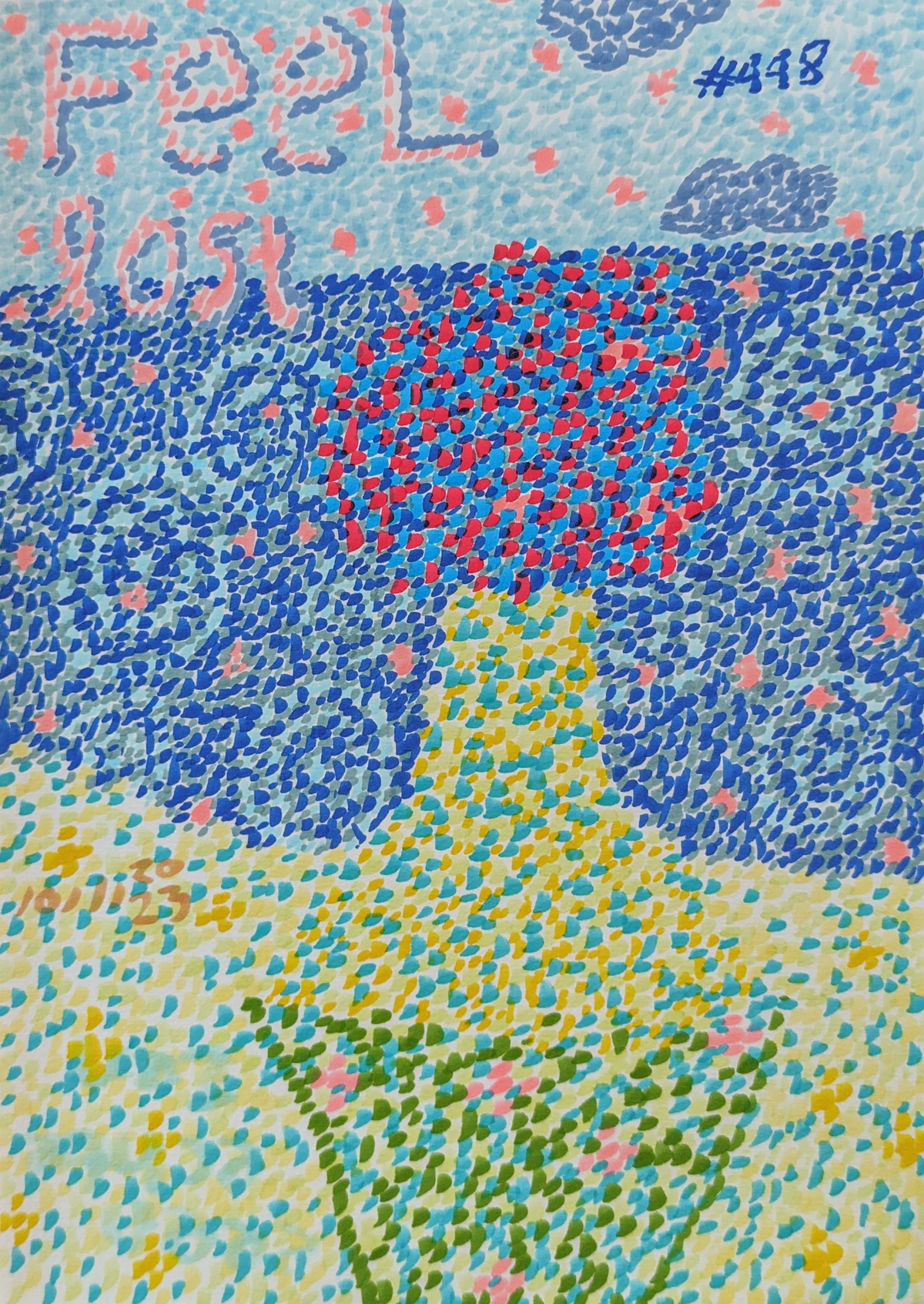
Take 'Echoes of Silence,' for instance, a large canvas dominated by deep blues and subtle greens, with delicate gold leaf accents. When I created it, I was consciously trying to translate the mindful calm I'd found in my own practice into a visual form, a sanctuary for both myself and the viewer. The process involved layering thin washes of blue, allowing them to softly bleed into each other, a meditative act in itself, until the silence truly felt visible. Creating this piece was about nurturing my own peace, and the finished work often instills a similar calm in viewers. Or consider 'Turbulence and Clarity,' a dynamic piece with swirling reds and oranges giving way to serene whites and greys; it visually maps the journey of emotional release and subsequent insight that art can provide, reflecting a period where I was grappling with big life changes. Creating 'Turbulence' meant allowing chaotic, aggressive strokes to dominate initially, a visceral release of tension, before consciously introducing softer, blending forms and lighter hues to represent the eventual calm and understanding. It was a conscious act of processing and integrating my emotions onto the canvas. And then there's 'Fragmented Reflections,' a piece built from layers of torn paper and acrylic washes, where jagged edges slowly meld into softer forms. This work directly illustrates my own process of confronting fragmented feelings and gradually integrating them into a more cohesive self-perception – a visual metaphor for healing and finding wholeness. Visitors often tell me they find themselves drawn into the emotional narratives woven into the canvases, experiencing a quiet resonance that echoes their own inner worlds. If you ever find yourself in 's-Hertogenbosch, you can see some of this exploration firsthand at my museum, and perhaps understand a bit more about the philosophy behind the colors.
The Whispers My Brush Hears: Unlocking the Transformative Benefits of Creative Expression
The benefits, for me, have been undeniable. It's like discovering a secret language that your soul already speaks; you just forgot the vocabulary. Here's a bit of what I've found:
Emotional Release: When Words Just Aren't Enough
Ever felt so wound up, buzzing with an emotion you can't even pinpoint? Or had something so big happen that no amount of talking could quite capture its weight? My art often becomes this messy, beautiful scream, a quiet sigh, or a triumphant burst of joy. It's a safe space to vent, to mourn, to celebrate, without needing to censor or explain. For those moments when words simply refuse to form, the canvas or sketchpad offers a direct, visceral outlet – a sudden splash of red for anger, a frantic scribble for anxiety, or gentle washes of blue for sorrow.
Beyond color, the very texture of the paint (thick impasto for defiance or smooth glazes for peace), or the line weight of a charcoal stroke (sharp and cutting versus soft and flowing), all become part of this non-verbal conversation. And it's not just brushes and paint. Working with clay offers a distinct tactile release—the sheer act of molding, pressing, and reshaping can be incredibly grounding and cathartic. I remember one afternoon, feeling utterly frustrated, I just mashed and pounded a lump of clay until my hands ached, and somehow, the tension in my shoulders eased too. Printmaking, with its focused process of carving and layering, allows for a deliberate, almost ritualistic emotional expression. Even working with found objects or natural materials like leaves, twigs, or stones can offer a grounding connection to the physical world, bringing a different kind of release. Digital art, too, provides a fluid, non-committal space for experimentation, where undo buttons encourage bold exploration without fear of 'ruin.' Even tearing and collaging paper can be a powerful way to deconstruct and reconstruct feelings. Textile art, with its stitches and weaves, offers a rhythmic, repetitive motion that can be deeply meditative. It allows me to communicate feelings too raw or complex for language, effectively becoming a form of self-advocacy when I can't verbally articulate my needs. The canvas (or sketchpad, or even just a scrap of paper), or even digital art on a tablet, becomes a silent, empathetic listener. It's a primal, spontaneous expression within your chosen medium, letting it all out without a single spoken word. Physiologically, this creative outpouring can also trigger the release of endorphins, those feel-good chemicals, and help regulate your nervous system by shifting from a sympathetic (fight-or-flight) to a parasympathetic (rest-and-digest) state. Ultimately, this release is about acknowledging and honoring your emotional landscape, whatever form it takes. So, what emotion are you holding onto today that needs a canvas?
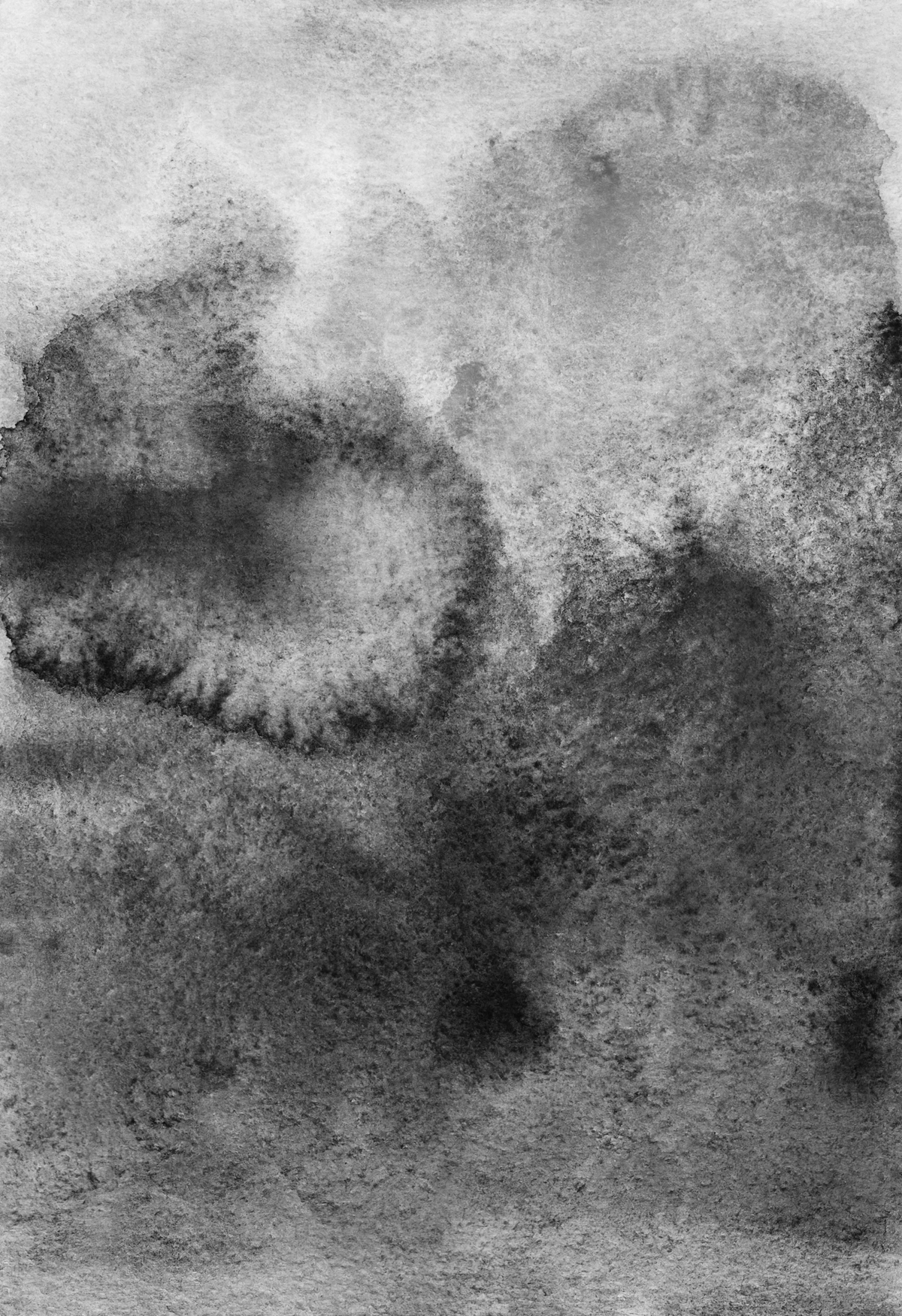
Explore more about my creative flow.
Self-Discovery & Insight: Looking into a Colorful Mirror
But this release is not just about letting go; it's also about gaining a deeper understanding of what we're releasing. Beyond simply expressing emotions, this creative process also offers a unique lens for self-understanding. This is where it gets really interesting, sometimes a bit like being a detective of your own psyche. As I create, I sometimes find myself looking at a completed piece and realizing something profound about my own internal landscape. What patterns emerged? What colors kept calling to me? Why did I choose that texture? Art can help you identify and process unhelpful thought patterns or cognitive distortions, not by direct challenge, but by externalizing their influence in a visual form. It’s like seeing the shadow they cast on your inner world.
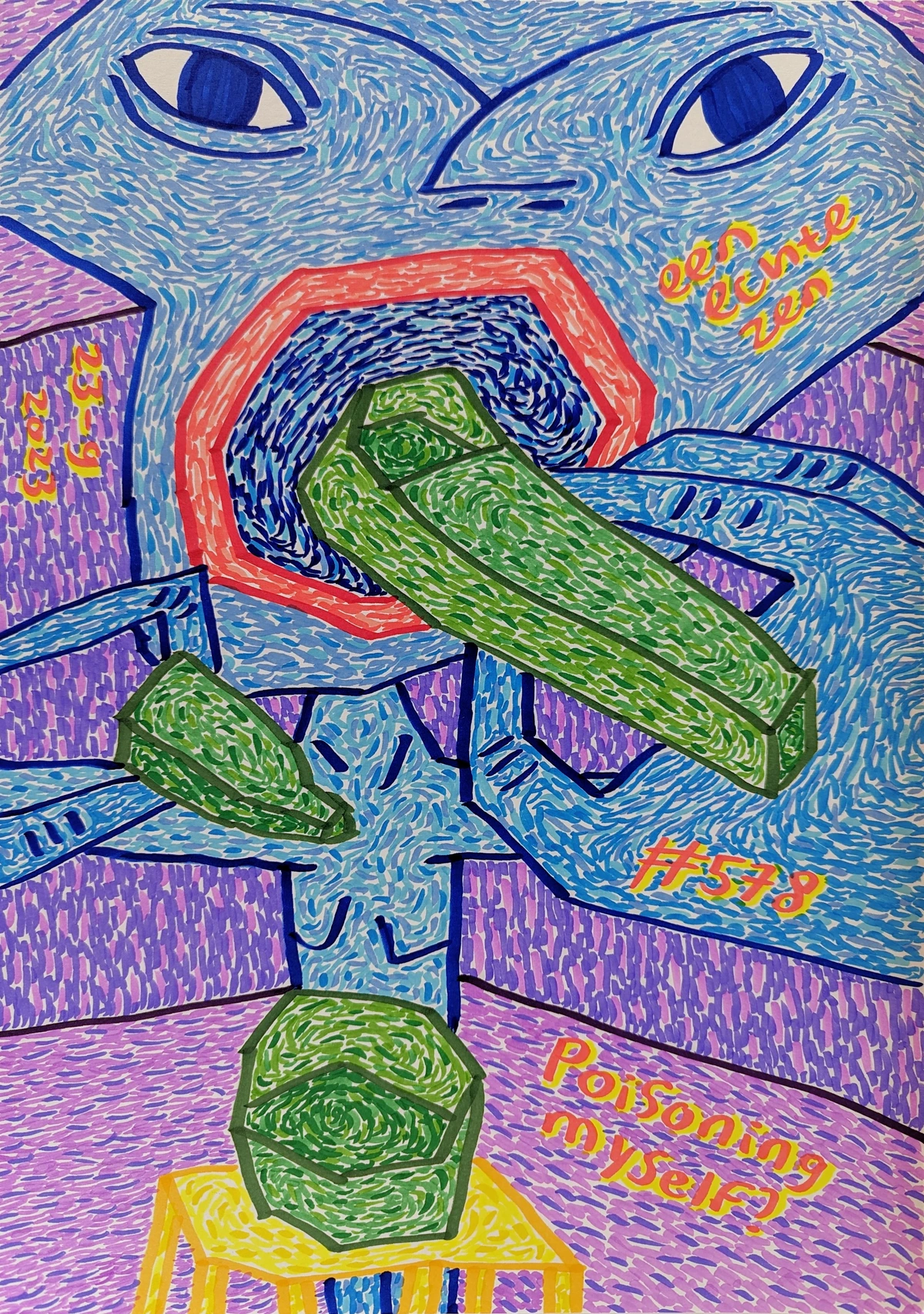
I remember once, during a period of intense decision fatigue, repeatedly sketching fragmented, incomplete circles, always with a narrow, dark opening. It wasn't until I stepped back that I realized this mirrored my feeling of being perpetually 'on the brink' of a decision, yet unable to fully commit or close the loop. If I were to analyze this now, I'd trace the progression:
- Initial Stage: The fragmented circles were all dark and tight, reflecting my paralysis and fear of committing.
- Mid-Process: Over time, as I continued to draw, some circles began to widen, allowing glimpses of lighter colors, signifying a gradual acceptance and openness to possibilities.
- Reflection & Integration: The persistent presence of a narrow, dark opening, even in later drawings, eventually revealed a deep-seated apprehension about finality, which was a surprising insight I hadn't vocalized. This understanding allowed me to approach the decision from a new perspective.
This wasn't a conscious choice, but a visual diary of my subconscious working through the dilemma. Perhaps a dominant blue reflects a deep calm, or aggressive red strokes signify underlying frustration. And what about that persistent yellow, popping up in nearly every piece? For me, it often represents a yearning for warmth or a suppressed anxiety fighting for expression. A recurring sharp, angular shape might represent a feeling of being 'cut off' or defensive, while a soft, rounded form could signify comfort or vulnerability. Even the composition can reveal a sense of balance or disarray in my inner world, highlighting subconscious patterns of thought or behavior I might not otherwise recognize. It's like looking into a colorful mirror and understanding a bit more about the peculiar creature staring back. We often assign symbolism to specific shapes, colors, or images without even realizing it, and art allows these personal symbols to emerge, offering clues to our inner workings. This is also where understanding The Emotional Language of Color in Abstract Art can be incredibly helpful.
To try this for yourself, pick a recurring element in your art – be it a color, a shape, or even a specific kind of line. Then, ask yourself:
- When does this element appear?
- What emotions or situations were present when I created it?
- How does it make you feel to look at it now?
- What might it be trying to tell me?
This isn't about rigid interpretation, but about gentle inquiry into your own visual language. It's an invaluable tool for understanding your own timeline of emotional growth, and for demystifying abstract art within yourself. This profound understanding of your inner world often leads to a deeper sense of peace, paving the way for moments of profound calm.
What hidden truths might your next creation reveal? The insights you gain are uniquely yours, a personal conversation with your subconscious.
Stress Reduction & Mindfulness: A Tiny Vacation for the Brain
Having looked into that colorful mirror, you might wonder how to find quiet amidst all that insight. For someone whose brain rarely stops spinning, the focus required for art is a godsend. Why? Because unlike the fragmented attention demanded by endless notifications and digital distractions, art asks for all of you. For an hour, my worries about deadlines, whether I remembered to feed the cat, or that slightly awkward conversation I had yesterday simply... fade. It's a mental vacation, a chance to be fully present with colors, textures, and evolving shapes. I remember one particularly frantic week, deadlines looming and my mind buzzing with a thousand to-dos, I squeezed in just twenty minutes of sketching with a cheap pencil. That brief immersion felt like hitting a reset button, allowing me to return to my tasks with a surprising sense of calm and renewed clarity.
This immersion is what psychologist Mihaly Csikszentmihalyi called a 'flow state' – that sweet spot where you're completely absorbed, losing track of time and self. It's a mental vacation, a chance to be fully present with colors, textures, and evolving shapes. And sometimes, it's not even about finding meaning or processing emotion; sometimes, the sheer act of creating, art for art's sake, is a profound form of mindful engagement in itself, simply enjoying the colors blend or the line form. This deeply focused state also echoes Carl Jung's concept of active imagination, where spontaneous imagery is allowed to emerge from the unconscious, providing a pathway for dialogue with inner figures and integration of fragmented aspects of the psyche. Beyond simply being present, achieving this flow state can also boost self-esteem and provide a profound sense of accomplishment, like a quiet victory over mental noise.
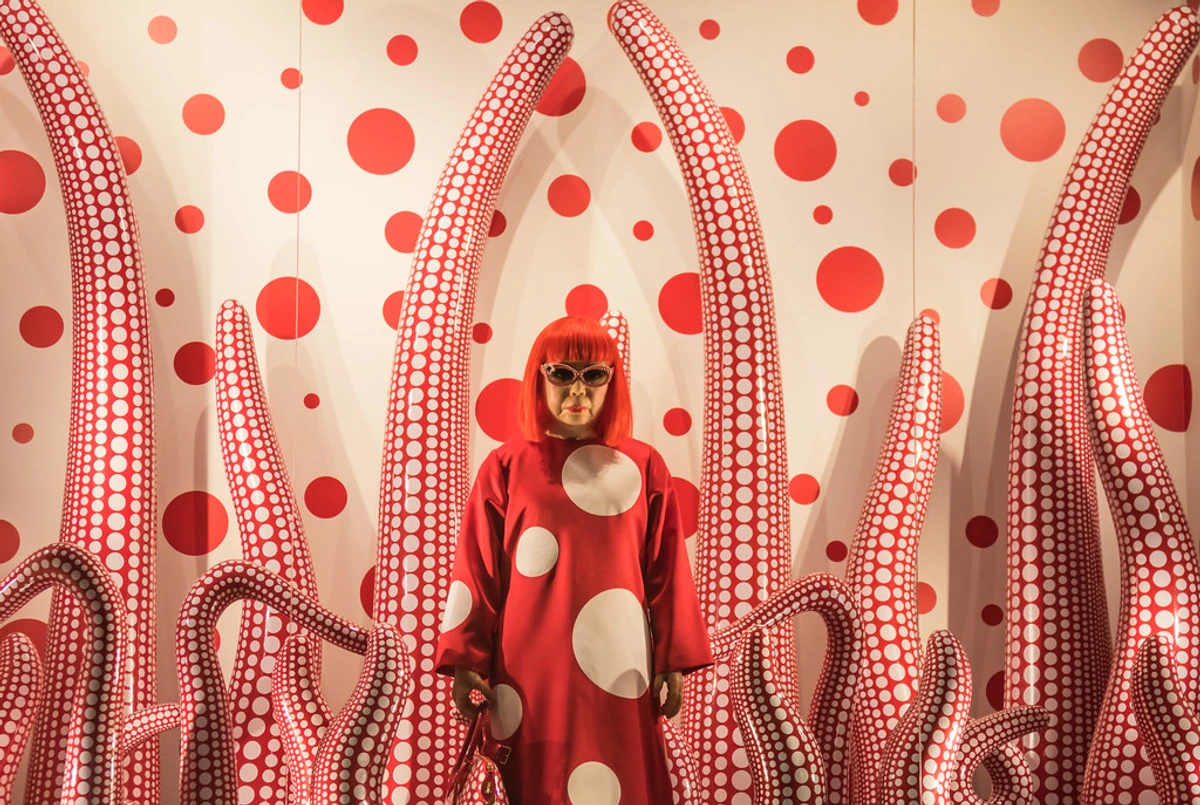
Physiologically, creative engagement has been shown to reduce cortisol levels (the stress hormone) and potentially release endorphins, contributing to an overall sense of calm and well-being. Even something as simple as mindful doodling—letting your hand move freely across paper without judgment—can be an accessible entry point to these benefits. It's a meditative act, pure and simple, and an incredible way to cultivate mindful moments and find relief from the daily grind. Many also find that art therapy for anxiety and stress relief offers similar calming benefits. In these moments of creation, you find a quiet harbor from the storm of daily life, and perhaps, a quiet strength begins to form.
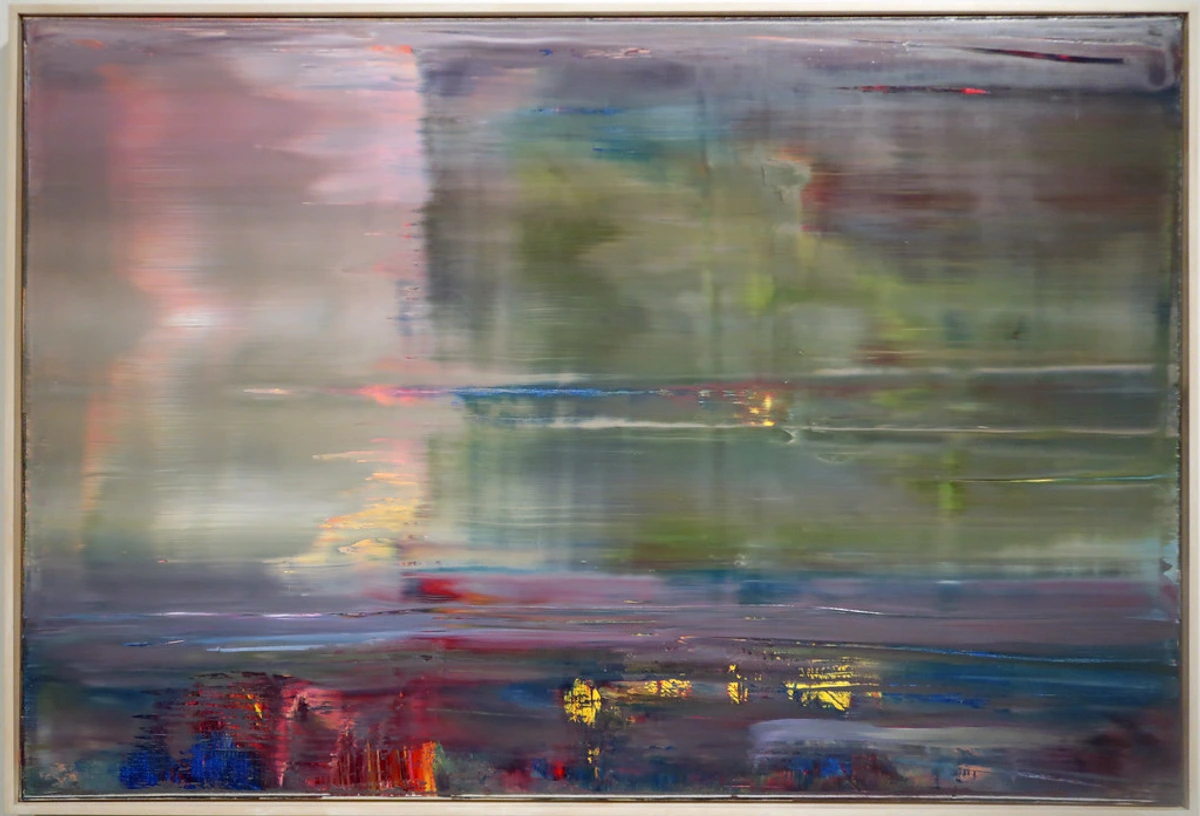
What small creative act can you weave into your day for a moment of calm? Even brief moments of artistic focus can significantly reduce mental clutter.
Building Resilience: The Quiet Strength of Creation
There's a quiet strength in knowing you can bring something new into existence, even if it's just a doodle that ends up in the bin. It's an act of agency, a reminder that you have the power to transform. Even when a piece doesn't turn out as planned (which, let's be real, happens often!), the iterative process of adapting, experimenting, and trying again builds a kind of creative resilience that spills over into other areas of life. This isn't just about art; it's about life skills.
I recall a time I was working on a large canvas, excitedly planning a serene blue wash, only for it to react unexpectedly with an underlying layer, transforming into a murky, dull green. My initial reaction was a hot wave of frustration and disappointment – 'Well, that's just ruined!' I probably mumbled, briefly considering just calling it 'swamp chic' and moving on. (And yes, sometimes I still do.) But instead of abandoning it, I challenged myself to incorporate the 'mistake.' This forced me to adapt, to see the unexpected as an opportunity. I layered transparent yellows and vibrant blues over it, building up texture and depth, applying thicker impasto in some areas to create new focal points, transforming the perceived failure into an unexpected, rich landscape of color and form. The feeling of turning that perceived failure into something beautiful was incredibly empowering, a testament to problem-solving and acceptance – a concrete skill that has helped me navigate other unexpected challenges in life.
Of course, not every 'mistake' turns into a masterpiece. Sometimes, it just remains a muddy mess, and the resilience comes from simply accepting that, cleaning the brushes, and starting fresh the next day, trusting the process over the outcome. I've had many pieces that were simply 'flops' – canvases I eventually painted over or threw out. The lesson wasn't about salvaging them, but about the quiet act of letting go and trying again, without judgment. This taught me patience when a technique fails, problem-solving when colors don't mix right, and acceptance when the outcome is unexpected. These are transferable skills for navigating life's inevitable detours, teaching us the power of imperfection. This quiet strength, forged in creation, is a powerful ally in navigating life's complexities. Every stroke, whether perfect or imperfect, builds a deeper capacity to handle life's uncertainties.
How has a 'mistake' in your life, artistic or otherwise, unexpectedly led to growth? Learning to adapt and accept the unforeseen is a cornerstone of both art and life.
When Creative Expression Gets Messy (Because It Will)
But this journey, like life, isn't always neat. In fact, if things don't get a little messy, you might not be digging deep enough. While the journey of art as therapy is often profoundly rewarding, it's also important to acknowledge that it can sometimes get chaotic, uncomfortable, or even a bit overwhelming – and that's precisely where some of the most profound growth occurs. Sometimes, when you start peeling back layers, things get a little... emotional. There have been times I've stared at a canvas and thought, 'Oh, that's what's been brewing.' I remember one overwhelming session where shades of muddy grey kept appearing, dominating the piece despite my attempts to brighten it. It hit me: I was carrying a burden of unresolved anger from a petty argument with a friend, something I had consciously dismissed as insignificant but that clearly clung to my subconscious like damp earth. Another time, I was trying to create something 'happy' – a vibrant, sun-drenched scene – but kept layering somber, muted purples and blues. That's when I realized I was still deeply grieving a small, unexpected professional setback I had dismissed as 'just business,' but my art revealed it was a genuine loss. Seeing difficult emotions or suppressed thoughts like anger, sadness, or fear emerge in your art can be uncomfortable, even a bit overwhelming. And sometimes, the sheer absurdity of your subconscious spilling onto a canvas can even be a little funny, in a dark sort of way, making you chuckle at your own inner workings.
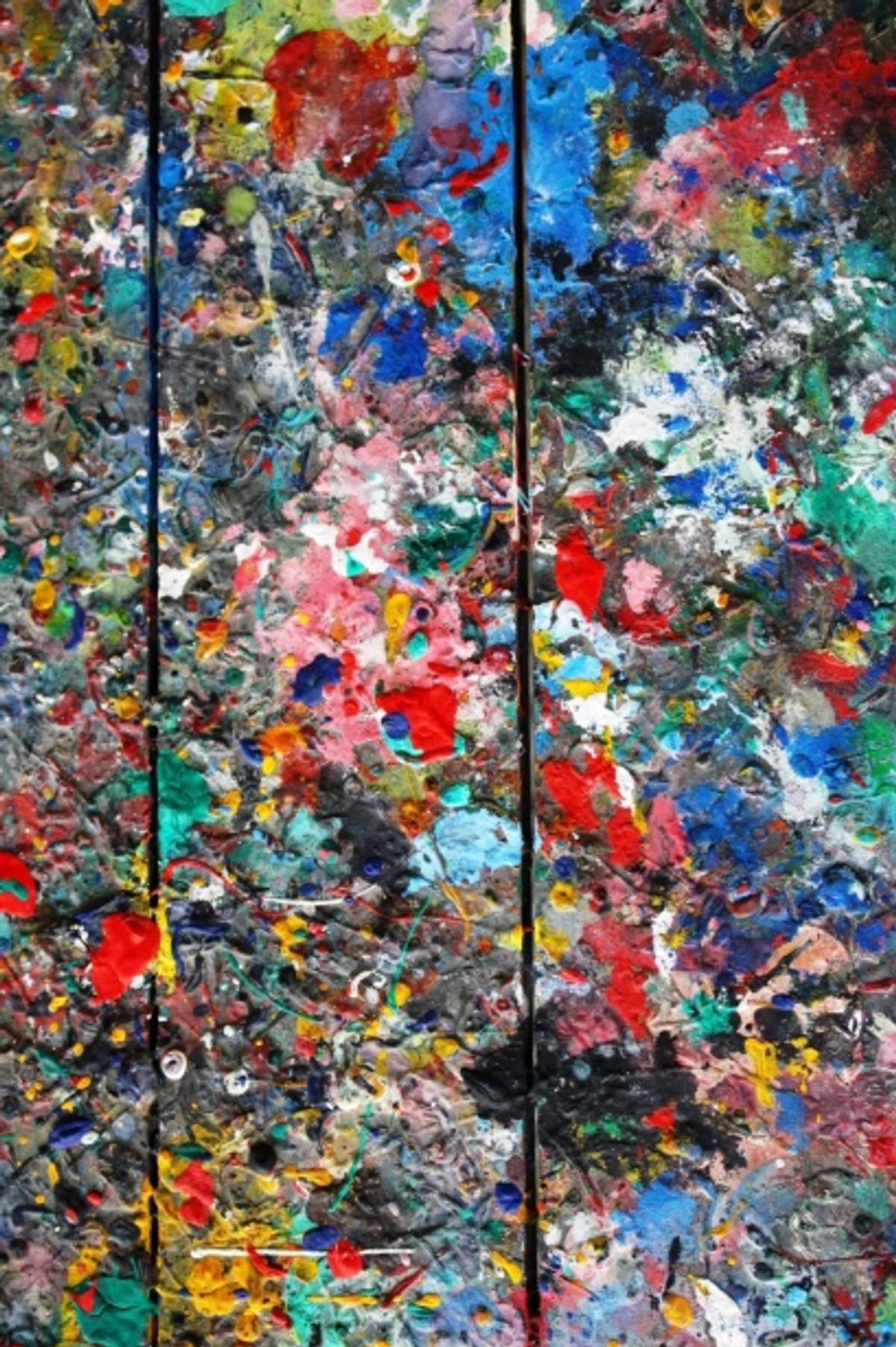
But here's the kicker: it's always illuminating. It's a chance to acknowledge those feelings, to sit with them, and perhaps even to begin to integrate them. The process cultivates self-compassion, reminding you that it's okay to feel whatever arises without judgment. If a piece becomes too intense, here are some grounding techniques I've found helpful:
- Take a Breather: Step away for a few minutes. Splash cool water on your face, or take a short walk outside to shift your focus.
- Sensory Anchor: Focus on your breath. Really feel the air entering and leaving your body. Then, pick one color on your canvas and describe it to yourself out loud – its hue, its texture, how it feels. This helps anchor you back to the present moment.
- Shift Mediums: If paint feels too heavy, switch to a pencil and paper, or even digital art for a less committal experience. Sometimes a change in tools can shift the energy.
- Journal It Out: After a messy session, spend a few minutes journaling about what came up in the artwork, describing the colors, shapes, and feelings evoked. This helps process the non-verbal into words.
And always remember, if the emotions feel too big to handle alone, discussing these insights with a trusted friend, family member, or a professional can provide further clarity and support. This journey into your inner landscape is a core part of the emotional resonance of my abstract art.
It's not about fixing anything immediately, but about seeing it. That awareness, that honest look, is the first step towards healing and growth. So, if things feel a bit chaotic on the canvas, embrace the chaos. It's just a reflection of something inside you that's ready to be seen. So, what 'messy' emotions might your art be ready to reveal? Your art can be a mirror, reflecting what truly lies within.
Art Journaling: A Structured Path for Personal Reflection
Sometimes the sheer intensity of freeform creative expression feels like too much, or perhaps you're simply looking for a more structured, gentle way to dip your toes into self-reflection. If so, art journaling might be your answer. Think of it as a low-pressure, contained diary, but instead of just words, you fill pages with sketches, paint, collages, scribbles, and anything else that comes to mind. It's a perfect blend of structure and spontaneity, ideal for those seeking a more iterative and gentle path to self-reflection. I once used a prompt to "Draw the sound of silence" and found myself creating a surprisingly intricate pattern of soft, swirling grays and blues that truly captured a sense of inner peace. It was far more revealing than any written description could have been.
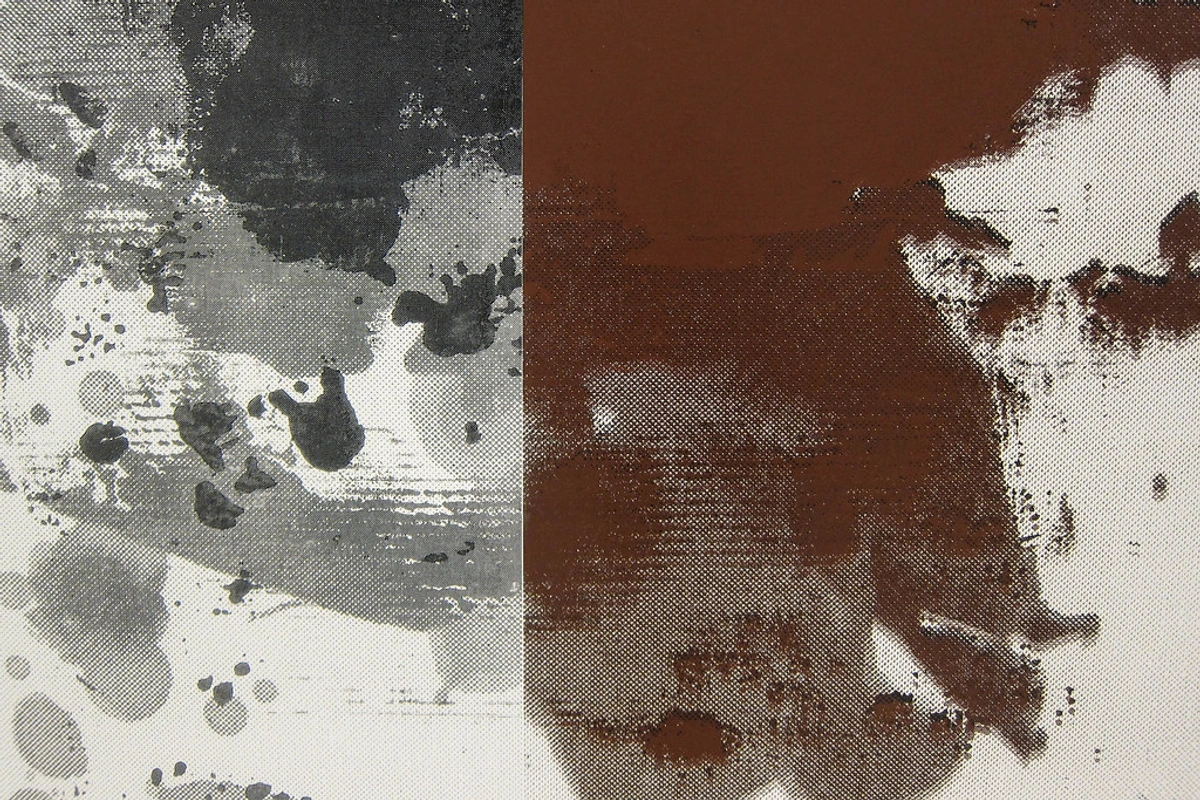
credit, licence
For art journaling, selecting the right materials can enhance the experience. Mixed media notebooks with thicker pages, watercolors, gouache, and pens that don't bleed through paper are often particularly versatile and forgiving, encouraging layered exploration without fear of 'ruining' the next page. The freedom to be imperfect is liberating.
Try giving yourself a prompt to spark that playful exploration. Other ideas include:
- Illustrate a memory that brings you joy.
- Create a visual representation of a challenge you've overcome.
- Draw your ideal sanctuary.
- Visualize a forgotten dream.
- Map your current emotional landscape.
- Illustrate a fear and how you might overcome it.
- Create a visual representation of a positive affirmation.
- Draw your inner child (and maybe give them a superhero cape!).
- Illustrate a future hope or aspiration.
- Draw the sound of your favorite music.
- Create a collage representing your ideal future self.
- Draw your inner critic (and maybe give it a silly hat!).
- Visualize a moment of pure, unadulterated joy.
- Paint the feeling of a bold color.
- Visualize a conversation between two clashing colors.
Whether you choose a structured journal or a freeform approach, the next step is simply to begin. So, which prompt will you try first?
Setting Realistic Expectations: The Pace of Your Inner Landscape
Before you dive in, a quick word about expectations. Art as therapy isn't a quick fix, nor is it always a straightforward path. Just like nurturing a garden, your inner landscape requires patience, consistent effort, and an understanding that growth happens in seasons. You won't necessarily have a profound breakthrough with every single session, and that's perfectly okay. Some days will be about messy experimentation, other days about quiet contemplation, and some might even feel frustrating. The goal isn't immediate transformation, but rather the cumulative effect of showing up for yourself, engaging in mindful creation, and allowing insights to unfold organically. Embrace the process, honor your pace, and trust that even small, consistent acts of creativity contribute to profound long-term well-being. It's a journey, not a destination, and every mark you make is a step forward towards a more connected self. With that in mind, let's look at how you can actually get started.
Okay, So How Do You Start? My Un-Therapeutic Guide to Getting Creative
Ready to give it a whirl? Here's my no-pressure guide. Seriously, this isn't about becoming the next Picasso; it's about connecting with yourself. Before you even pick up a brush, consider creating a small, safe space where you can create freely, free from external judgment or pressure. This dedicated nook, however humble, becomes your personal sanctuary for uninhibited expression.
- Forget "Good" Art: This isn't for a gallery (unless you're me, and you're making art anyway, and hey, if you like it, it's for sale!). Seriously, if your inner critic shows up, tell it to take a coffee break. A long one. (Maybe offer it a freshly baked cookie, too – sometimes bribery works.) Trust me, my own journey involved years of letting go of the need for perfection – it's a practice in itself. I used to agonize over every line, every color choice, convinced it wasn't 'good enough.' But the real magic happened when I abandoned that pressure and simply allowed myself to play. The only requirement is to make something. A splotch of paint, a scribbled line – it's all valid, and a profound act of self-care.
- Pick Your Poison (Medium, I Mean): Paint, pens, colored pencils, clay, collage, even just tearing paper and rearranging it. I often grab whatever's closest. Sometimes it's a fancy paint set, sometimes it's just a dried-up marker and an old receipt. Don't overthink it; the humblest materials—even found objects or natural items from your environment, like leaves, twigs, or stones—can spark the deepest insights and offer a grounding connection. And don't forget digital tools – drawing apps on your phone or tablet offer an equally valid, accessible avenue for creative expression.
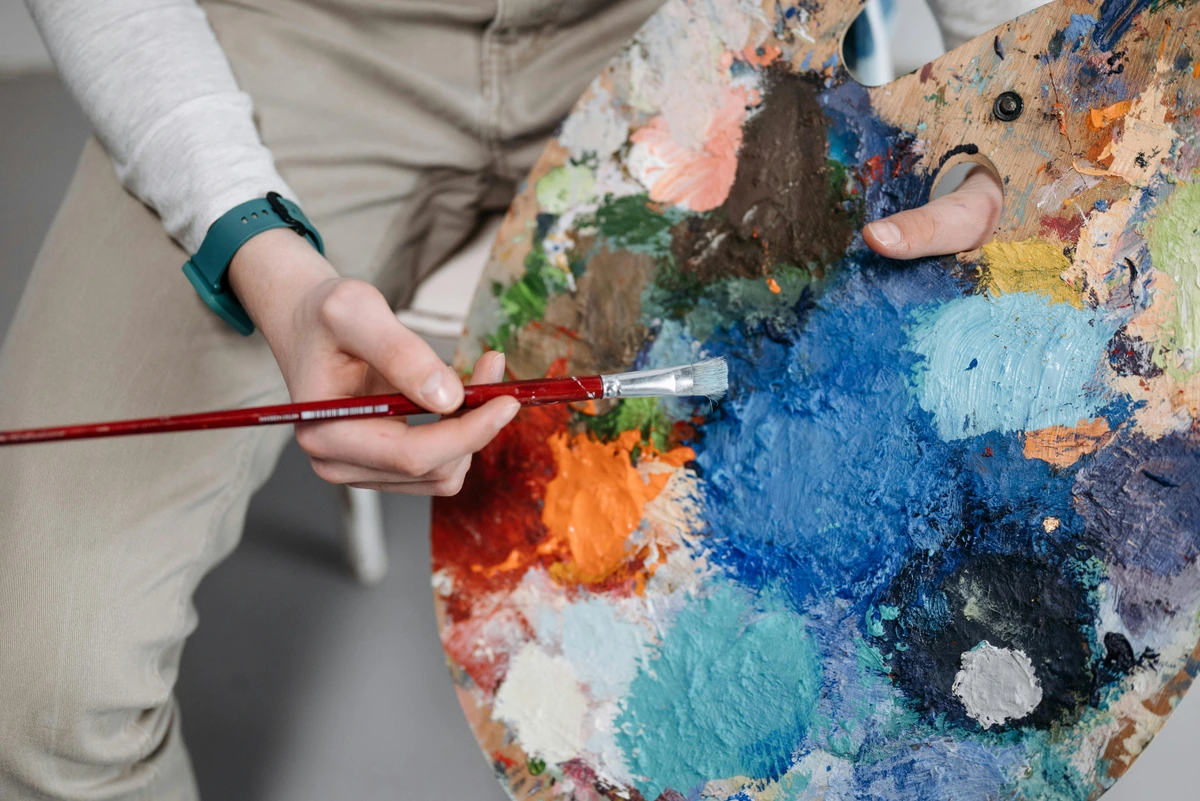
- Set a Tiny Intention (or None at All): Maybe you want to draw how "tired" feels. Or "anger." Or maybe you just want to see what happens when blue meets yellow. Sometimes I just put on some music and let my hand move. The intention can be as simple as "explore" or "just make a mark." Remember, the goal is discovery, not a predetermined masterpiece.
- Process Over Product: The magic happens while your hand is moving, while you're mixing colors, while you're seeing what evolves. The final piece is just a snapshot of that journey. Don't fret about the outcome; embrace the adventure. Let the unexpected drips and smudges tell their own story. You might even discover the power of imperfection.
Frequently Asked Questions About Art as Therapy (My Take)
Here are some questions I imagine you might have, and my very un-academic answers:
- Do I need to be "good" at art? Absolutely not! The whole point is to express, not to impress. Your six-year-old self would be a pro at this. Ditch perfectionism. Remember, it's about the process, not a portfolio piece.
- Can I do this alone, or do I need a therapist? Both are valid and valuable! Self-guided art exploration is a powerful form of self-care and personal development, providing immense benefits for general well-being. However, for significant mental health conditions, complex trauma, or specific diagnoses, a trained and certified art therapist provides structured, clinical support that self-guided art cannot replace. While immensely helpful for personal growth and emotional processing, self-guided art is not a substitute for clinical psychotherapy when dealing with serious mental health challenges.
- What if I just make a mess? Perfect! That is the point. A mess on the paper often reflects a release inside. Embrace the drips, the smudges, the unexpected – it's all part of embracing the power of imperfection and letting go of judgment. In fact, some of my most insightful pieces began as what I thought were complete blunders!
- What if I don't have any art supplies? You probably do! A pen and a scrap of paper, a twig and some mud, even a finger tracing patterns in condensation on a window – it all counts. Digital tools like drawing apps on your phone or tablet are also perfectly valid and accessible. The creativity comes from you, not the materials.
- Is it really "therapy"? Yes, it is profoundly therapeutic, with a capital 'T', promoting self-awareness, reducing stress, and offering a unique avenue for emotional processing. From mild stress relief to significant emotional processing, art offers a spectrum of benefits. However, it's vital to clarify that while immensely helpful for general well-being and personal growth – a powerful form of self-care and personal development, even – self-guided art exploration is not a substitute for clinical psychotherapy when dealing with significant mental health conditions, trauma, or specific diagnoses. It's a powerful tool in your well-being toolkit, but not a replacement for professional guidance when facing serious mental health challenges.
- How much time do I need to commit? Not much at all! Even 15-30 minutes of focused creative time can shift your perspective and offer significant benefits. The real power often lies in consistency, even in small bursts, rather than infrequent long sessions. Think of it like daily journaling – a little bit often adds up to profound insight.
- Should I have an intention before I start, or just be spontaneous? Both approaches are equally valid and beneficial! Sometimes a clear intention (e.g., "express my anxiety") helps focus your energy and provides a starting point, while other times, simply letting your hands move without a preconceived idea can lead to surprising insights and deeper emotional release. Trust what feels right in the moment; your subconscious often knows best, and sometimes it just needs permission to speak without a script.
- Can art help me connect with others? Absolutely! While often a personal journey, sharing your art (if you choose to), discussing interpretations, participating in a community art workshop, or even engaging in collaborative art-making projects can foster deeper empathy and connection with others. Seeing how others express their inner worlds can be incredibly validating and bridge understanding.
Conclusion: Just Start
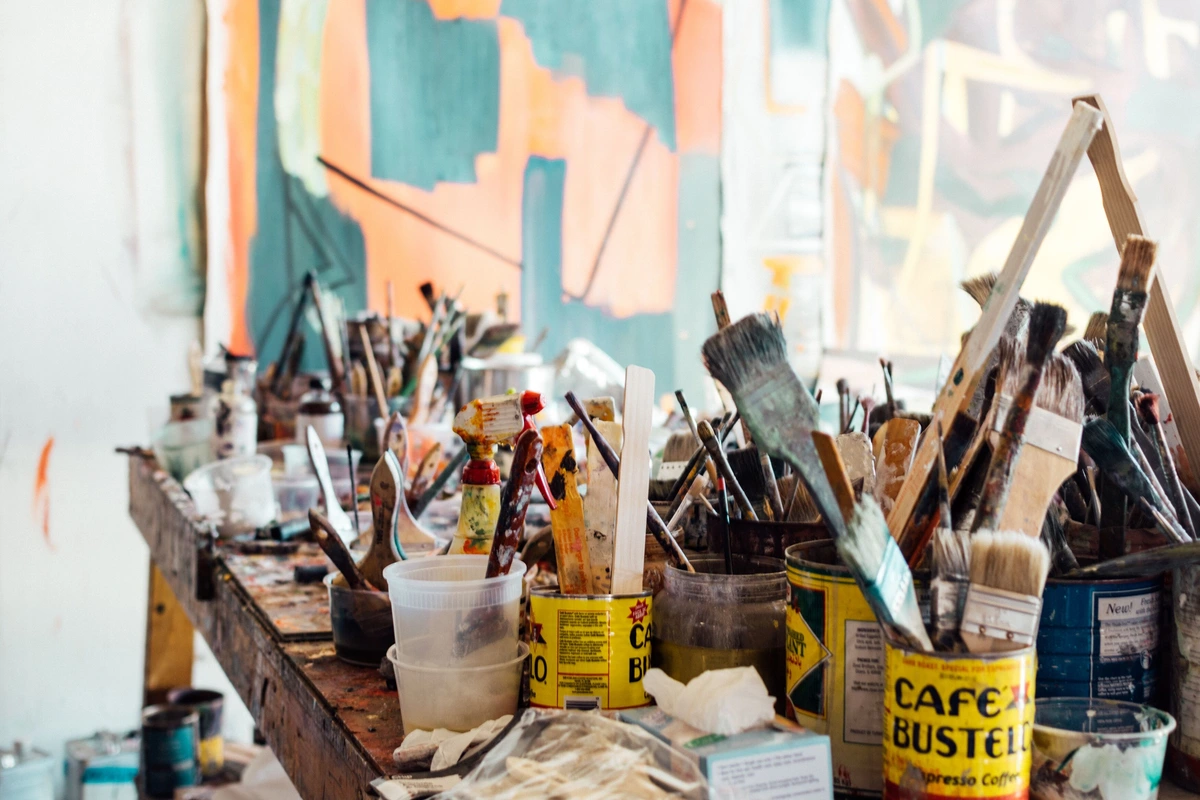
So, there you have it. My deeply personal take on why art isn't just pretty pictures, but a powerful, accessible tool for navigating the complexities of being human. It's not about talent; it's about willingness. Willingness to explore, to feel, to let go, and to find the quiet strength within. This journey is truly your own, offering a unique path to healing and growth. Grab a pencil, a crayon, or even just some mud. Your inner world is waiting for you to pick up the phone, and art is a pretty good way to dial. Just showing up for yourself, brush in hand or finger to screen, is a profound act of self-care. Start small, be kind to yourself, and who knows, you might just untangle a few knots and discover a whole new landscape within. The beauty of art as therapy lies in its simplicity and profound ability to connect you with your deepest self, transforming your internal landscape one meaningful stroke at a time, revealing wonders you never knew were there. And remember, this journey is ongoing – every piece is just a snapshot, a step further into the vibrant, ever-evolving landscape of you. So, what will you create today?




